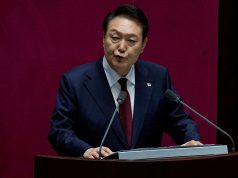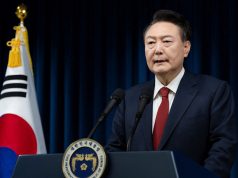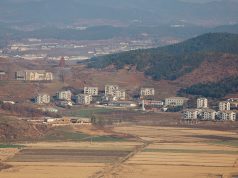
Hollywood actor Willem Dafoe was called “Dafriend” after reports of him being at the historic People Power Revolution in 1986 resurfaced on a discussion website.
Posts about the actor trended on r/Philippines, a niche community on Reddit dedicated to the country and all things Filipino.
One user shared an infographic of a report with the caption “TIL: Apparently, Willem Dafoe was at the People Power Revolution in 1986.”
“TIL” is an abbreviation for “Today I learned,” usually used on social media, messaging apps and discussion forums.
The infographic included a quote from the acclaimed actor who described his experience as “an incredible feeling.”
The Reddit post has been upvoted at 98% and has earned more than 100 comments as of this writing.
“DaFoe of Marcos. DaFriend of Revolution,” an online user commented.
“So he’s really Willem ‘Dafriend’ is what you’re saying?” another Redditor wrote.
“Apparently, Willem Dafoe is actually Willem Dafriend,” a different user quipped.
“So he’s (Willem) Dafriend of the People?” wrote another Redditor.
Willem in 2019 revealed that he has witnessed first-hand the EDSA Revolution which toppled the Marcos regime led by late dictator Ferdinand Marcos Sr. who placed the country under a 14-year martial law rule.
The actor was then part of the award-winning war movie “Platoon” which entailed him to film in the Philippines.
When Willem arrived in the country in February 1986, he recalled that his plane was the “last plane in because there was a revolution,” according to his interview with Vanity Fair.
The actor said that he was told to “sit tight” because the production of their movie was canceled due to the bloodless protests.
“So, for about three or four days, me and a couple of other people that were there, ahead of time, were out on the streets with the people. And it was an incredible feeling because it was a revolution that happened for the most part, without violence,” Willem shared.
The production eventually resumed after Marcos Sr. was ousted. It had principal photography done in several parts of Luzon such as Cavite and Laguna. The movie was released in theaters by December of that year.
Willem’s participation in the Oliver Stone-directed film earned him his first Oscar nomination for Best Supporting Actor.
“Platoon” also won four Academy Awards including Best Picture, Best Director for Stone, Best Sound and Best Film Editing.
Dafoe is also known for playing Green Goblin on the 2002 movie “Spider-Man.”
The bloodless revolution
The People Power Revolution is a culmination of a series of public protests that happened for four days, which was a manifestation of Filipinos’ sentiments against totalitarian rule, according to the Official Gazette.
The protests began as a response to the rigged results of the snap presidential elections which declared Marcos Sr. as the winner, according to the Commission on Elections (Comelec).
On the other hand, the National Citizen’s Movement for Free Elections (Namfrel) had declared Corazon “Cory” Aquino, widow of late opposition senator Ninoy Aquino, as the winner.
The protests turned towards a vigil to guard the defecting military officials from Marcos Sr. It later progressed to Filipinos, including members of the Catholic Church, quietly facing off armored tanks with linked arms.
“Columns of armored tanks formed barricades along EDSA, with heavily armed battalions as escort. Thus began the banded Filipinos’ show of force—through song and slogans; through earnest extensions of friendship to hard-faced soldiers; through the flashing of the Laban sign—symbol of Cory Aquino’s campaign and of the movement that carried her; through prayers and linked arms and rosaries, human barricades and flowers,” the Gazette shared.
On the last day of the revolution, Aquino was sworn in as the 11th and the first woman president of the country.









